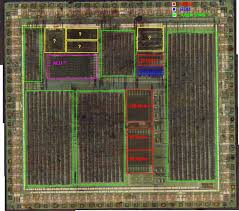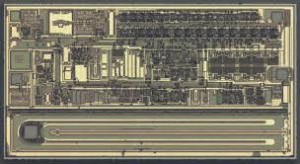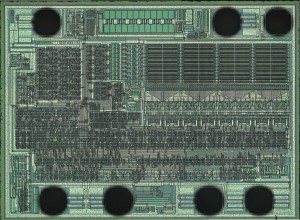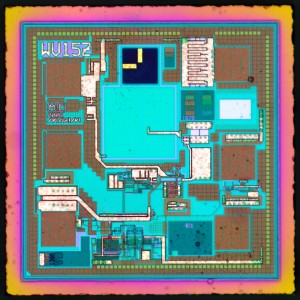Archive for the ‘Reverse Engineer Microcontroller’ Category
 Copy Chip SAF-XC888CM-8FFI Binary
Copy Chip SAF-XC888CM-8FFI Binary
Copy Chip SAF-XC888CM-8FFI Binary from the memory and the program will be readout from flash and data will be readout from eeprom, unlocking microcontroller protective system will help to extract the firmware directly out from its memory;
The XC886/888 has the following features:
· High-performance XC800 Core
– compatible with standard 8051 processor
– two clocks per machine cycle architecture (for memory access without wait state)
– two data pointers
· On-chip memory
– 12 Kbytes of Boot ROM
– 256 bytes of RAM
– 1.5 Kbytes of XRAM
– 24/32 Kbytes of Flash;
24/32 Kbytes of ROM, with additional 4 Kbytes of Flash (includes memory protection strategy)
· I/O port supply at 3.3 V or 5.0 V and core logic supply at 2.5 V (generated by embedded voltage regulator)
Power-on reset generation
Brownout detection for core logic supply
On-chip OSC and PLL for clock generation
– PLL loss-of-lock detection
Power saving modes
– slow-down mode
– idle mode
– power-down mode with wake-up capability via RXD or EXINT0
– clock gating control to each peripheral
Programmable 16-bit Watchdog Timer (WDT)
Six ports
– Up to 48 pins as digital I/O
– 8 pins as digital/analog input
8-channel, 10-bit ADC
Four 16-bit timers
– Timer 0 and Timer 1 (T0 and T1)
– Timer 2 and Timer 21 (T2 and T21)
Multiplication/Division Unit for arithmetic operations (MDU)
Software libraries to support floating point and MDU calculations
CORDIC Coprocessor for computation of trigonometric, hyperbolic and linear functions
MultiCAN with 2 nodes, 32 message objects
Capture/compare unit for PWM signal generation (CCU6)
Two full-duplex serial interfaces (UART and UART1)
Synchronous serial channel (SSC)
On-chip debug support
– 1 Kbyte of monitor ROM (part of the 12-Kbyte Boot ROM)
– 64 bytes of monitor RAM
Packages:
– PG-TQFP-48
– PG-TQFP-64
Temperature range TA:
– SAF (-40 to 85 °C)
– SAK (-40 to 125 °C)
 Copy Microcontroller AT89C51RE2 Binary
Copy Microcontroller AT89C51RE2 Binary
Copy Microcontroller AT89C51RE2 Binary from its flash and eeprom memory, then replicate the program and data to other blank MCU AT89C51RE2 for the same functions;
· 80C52 Compatible
– 8051 Instruction Compatible
– Four 8-bit I/O Ports (44 Pins Version)
– Three 16-bit Timer/Counters
– 256 bytes Scratch Pad RAM
– 11 Interrupt Sources With 4 Priority Levels if Copy Microcontroller
ISP (In-System Programming) Using Standard VCC Power Supply
Integrated Power Monitor (POR/PFD) to Supervise Internal Power Supply
Boot ROM Contains Serial Loader for In-System Programming
High-speed Architecture after Copy Microcontroller
– In Standard Mode:
40 MHz (Vcc 2.7V to 5.5V, Both Internal and External Code Execution)
60 MHz (Vcc 4.5V to 5.5V and Internal Code Execution Only)
– In X2 Mode (6 Clocks/Machine Cycle)
20 MHz (Vcc 2.7V to 5.5V, Both Internal and External Code Execution)
30 MHz (Vcc 4.5V to 5.5V and Internal Code Execution Only)
128K bytes On-chip Flash Program/Data Memory
– 128 bytes Page Write with auto-erase when Copy Microcontroller
– 100k Write Cycles
On-chip 8192 bytes Expanded RAM (XRAM)
– Software Selectable Size (0, 256, 512, 768, 1024, 1792, 2048, 4096, 8192 bytes)
Extended stack pointer to 512 bytes
Variable Length MOVX for Slow RAM/Peripherals
Improved X2 Mode with Independant Selection for CPU and Each Peripheral
Keyboard Interrupt Interface on Port 1
SPI Interface (Master/Slave Mode) after Copy Microcontroller
8-bit Clock Prescaler
Programmable Counter Array with:
– High Speed Output
– Compare/Capture
– Watchdog Timer Capabilities
Asynchronous Port Reset
Two Full Duplex Enhanced UART with Dedicated Internal Baud Rate Generator
Low EMI (inhibit ALE)
Hardware Watchdog Timer (One-time Enabled with Reset-Out), Power-Off Flag
Power Control Modes: Idle Mode, Power-down Mode
Power Supply: 2.7V to 5.5V when Copy Microcontroller
Temperature Ranges: Industrial (-40 to +85°C)
Packages: PLCC44, VQFP44
 Copy MCU AT89C55WD Binary
Copy MCU AT89C55WD Binary
Copy MCU AT89C55WD Binary means the firmware from both eeprom and flash will be readout and rewrite to other blank Microcontroller AT89C55WD which will provide the same functions as originals;
Compatible with MCS®-51 Products
20K Bytes of Reprogrammable Flash Memory
Endurance: 10,000 Write/Erase Cycles
4V to 5.5V Operating Range when Copy MCU
Fully Static Operation: 0 Hz to 33 MHz
Three-level Program Memory Lock
256 x 8-bit Internal RAM
32 Programmable I/O Lines
Three 16-bit Timer/Counters after Copy MCU
Eight Interrupt Sources
Programmable Serial Channel
Low-power Idle and Power-down Modes
Interrupt Recovery from Power-down Mode
Hardware Watchdog Timer if Copy MCU
Dual Data Pointer
Power-off Flag
Green (Pb/Halide-free) Packaging Option before Copy MCU
Circuit Engineering Company Limited continues to be recognized as the Southern China Leader in Services for IC Break, MCU attack, Chip Recover, Microcontroller Copy service. With the advancement of today’s modern circuit board technology, it is more important than ever to have specialists available to help you at a moment’s notice. Our engineering and commercial teams collectively have a vast amount of electronic experience covering field include Consumer Electronics, Industrial Automation Electronics, Wireless Communication Electronics., etc. For more information please contact us through email.
 Copy IC PIC16F886 Firmware
Copy IC PIC16F886 Firmware
Copy IC PIC16F886 Firmware and reprogramme the program into blank Microcontroller PIC16F886 which will provide the same functions as original MCU PIC16F886 after Crack MCU protective system;
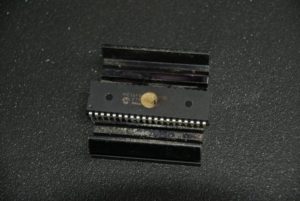
Copy IC PIC16F886 Firmware and reprogramme the program into blank Microcontroller PIC16F886 which will provide the same functions as original MCU PIC16F886 after Crack MCU protective system
High-Performance RISC CPU:
· Only 35 instructions to learn:
– All single-cycle instructions except branches
· Operating speed:
– DC – 20 MHz oscillator/clock input
– DC – 200 ns instruction cycle
· Interrupt capability
· 8-level deep hardware stack
· Direct, Indirect and Relative Addressing modes
Special Microcontroller Features:
· Precision Internal Oscillator:
– Factory calibrated to ±1%
– Software selectable frequency range of 8 MHz to 31 kHz
– Software tunable
– Two-Speed Start-up mode
– Crystal fail detect for critical applications
– Clock mode switching during operation for power savings
· Power-Saving Sleep mode
· Wide operating voltage range (2.0V-5.5V)
· Industrial and Extended Temperature range
· Power-on Reset (POR)
· Power-up Timer (PWRT) and Oscillator Start-up Timer (OST)
· Brown-out Reset (BOR) with software control option
· Enhanced low-current Watchdog Timer (WDT) with on-chip oscillator (software selectable nominal 268 seconds with full prescaler) with software enable
· Multiplexed Master Clear with pull-up/input pin
· Programmable code protection
· High Endurance Flash/EEPROM cell:
– 100,000 write Flash endurance
– 1,000,000 write EEPROM endurance
– Flash/Data EEPROM retention: > 40 years
· Program memory Read/Write during run time
· In-Circuit Debugger (on board)
Low-Power Features:
· Standby Current:
– 50 nA @ 2.0V, typical
· Operating Current:
– 11 ìA @ 32 kHz, 2.0V, typical
– 220 ìA @ 4 MHz, 2.0V, typical
· Watchdog Timer Current:
– 1 ìA @ 2.0V, typical
Peripheral Features:
· 24/35 I/O pins with individual direction control
– High current source/sink for direct LED drive
– Interrupt-on-Change pin
– Individually programmable weak pull-ups
– Ultra Low-Power Wake-up (ULPWU)
· Analog Comparator module with:
– Two analog comparators
– Programmable on-chip voltage reference (CVREF) module (% of VDD)
– Fixed voltage reference (0.6V)
– Comparator inputs and outputs externally accessible
– SR Latch mode
– External Timer1 Gate (count enable)
· A/D Converter:
– 10-bit resolution and 11/14 channels
· Timer0: 8-bit timer/counter with 8-bit programmable prescaler
· Enhanced Timer1:
– 16-bit timer/counter with prescaler
– External Gate Input mode
– Dedicated low-power 32 kHz oscillator
· Timer2: 8-bit timer/counter with 8-bit period register, prescaler and postscaler
· Enhanced Capture, Compare, PWM+ module:
– 16-bit Capture, max. resolution 12.5 ns
– Compare, max. resolution 200 ns
– 10-bit PWM with 1, 2 or 4 output channels, programmable “dead time”, max. frequency 20 kHz
– PWM output steering control
· Capture, Compare, PWM module:
– 16-bit Capture, max. resolution 12.5 ns
– 16-bit Compare, max. resolution 200 ns
– 10-bit PWM, max. frequency 20 kHz
· Enhanced USART module:
– Supports RS-485, RS-232, and LIN 2.0
– Auto-Baud Detect
– Auto-Wake-Up on Start bit
· In-Circuit Serial ProgrammingTM (ICSPTM) via two pins
· Master Synchronous Serial Port (MSSP) module supporting 3-wire SPI (all 4 modes) and I2C™ Master and Slave Modes with I2C address mask
 Copy Microcontroller P87C51X2BBD Binary
Copy Microcontroller P87C51X2BBD Binary
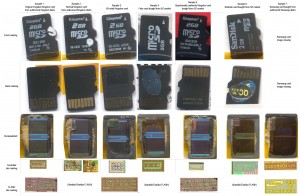
Copy Microcontroller P87C51X2BBD Binary from locked memory include flash and eeprom, remove the security fuse bit of MCU P87C51X2 by MCU Cracking technology and readout firmware from opened Microprocessor
Copy Microcontroller P87C51X2BBD Binary from locked memory include flash and eeprom, remove the security fuse bit of MCU P87C51X2 by MCU Cracking technology and readout firmware from opened Microprocessor;
FEATURES
· 80C51 Central Processing Unit
– 4 kbytes ROM/EPROM (P80/P87C51X2)
– 8 kbytes ROM/EPROM (P80/P87C52X2)
– 16 kbytes ROM/EPROM (P80/P87C54X2)
– 32 kbytes ROM/EPROM (P80/P87C58X2)
– 128 byte RAM (P80/P87C51X2 and P80C31X2)
– 256 byte RAM (P80/P87C52/54X2/58X2 and P80C32X2)
– Boolean processor
– Fully static operation
– Low voltage (2.7 V to 5.5 V at 16 MHz) operation
· 12-clock operation with selectable 6-clock operation (via software or via parallel programmer)
· Memory addressing capability
– Up to 64 kbytes ROM and 64 kbytes RAM
· Power control modes:
– Clock can be stopped and resumed
– Idle mode
– Power-down mode
· CMOS and TTL compatible
· Two speed ranges at VCC = 5 V
– 0 to 30 MHz with 6-clock operation
– 0 to 33 MHz with 12-clock operation
· PLCC, DIP, TSSOP or LQFP packages
· Extended temperature ranges
· Dual Data Pointers
· Security bits:
– ROM (2 bits)
– OTP (3 bits)
· Encryption array – 64 bytes
· Four interrupt priority levels
· Six interrupt sources
· Four 8-bit I/O ports
· Full-duplex enhanced UART
– Framing error detection
– Automatic address recognition
· Three 16-bit timers/counters T0, T1 (standard 80C51) and additional T2 (capture and compare)
· Programmable clock-out pin
· Asynchronous port reset
· Low EMI (inhibit ALE, slew rate controlled outputs, and 6-clock mode)
· Wake-up from Power Down by an external interrupt.
Circuit Engineering Company Limited continues to be recognized as the Southern China Leader in Services for IC Break, MCU recover, Chip Recover, Microcontroller Copy service. With the advancement of today’s modern circuit board technology, it is more important than ever to have specialists available to help you at a moment’s notice. Our engineering and commercial teams collectively have a vast amount of electronic experience covering field include Consumer Electronics, Industrial Automation Electronics, Wireless Communication Electronics., etc. For more information please contact us through email.
 Copy MCU ATmega32A Software
Copy MCU ATmega32A Software
Copy MCU ATmega32A Software from master microcontroller ATmega32A program memory, and reprogramme the firmware into blank new Microprocessor ATmega32A for MCU cloning;
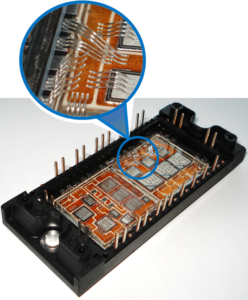
Copy MCU ATmega32A Software from master microcontroller ATmega32A program memory, and reprogramme the firmware into blank new Microprocessor ATmega32A for MCU cloning
Features
· High-performance, Low-power AVR® 8-bit Microcontroller
· Advanced RISC Architecture
– 131 Powerful Instructions – Most Single-clock Cycle Execution
– 32 x 8 General Purpose Working Registers
– Fully Static Operation
– Up to 16 MIPS Throughput at 16 MHz
– On-chip 2-cycle Multiplier
High Endurance Non-volatile Memory segments
– 32K Bytes of In-System Self-programmable Flash program memory after firmware MCU PIC16F84 extraction
– 1024 Bytes EEPROM
– 2K Byte Internal SRAM
– Write/Erase Cycles: 10,000 Flash/100,000 EEPROM
– Data retention: 20 years at 85°C/100 years at 25°C(1)
– Optional Boot Code Section with Independent Lock Bits
· In-System Programming by On-chip Boot Program
· True Read-While-Write Operation
– Programming Lock for Software Security
JTAG (IEEE std. 1149.1 Compliant) Interface
– Boundary-scan Capabilities According to the JTAG Standard
– Extensive On-chip Debug Support
– Programming of Flash, EEPROM, Fuses, and Lock Bits through the JTAG Interface
Peripheral Features
– Two 8-bit Timer/Counters with Separate Prescalers and Compare Modes
– One 16-bit Timer/Counter with Separate Prescaler, Compare Mode, and Capture Mode
– Real Time Counter with Separate Oscillator
– Four PWM Channels
– 8-channel, 10-bit ADC
· 8 Single-ended Channels
· 7 Differential Channels in TQFP Package Only
· 2 Differential Channels with Programmable Gain at 1x, 10x, or 200x
– Byte-oriented Two-wire Serial Interface
– Programmable Serial USART
– Master/Slave SPI Serial Interface
– Programmable Watchdog Timer with Separate On-chip Oscillator
– On-chip Analog Comparator
Special Microcontroller Features
– Power-on Reset and Programmable Brown-out Detection
– Internal Calibrated RC Oscillator
– External and Internal Interrupt Sources
– Six Sleep Modes: Idle, ADC Noise Reduction, Power-save, Power-down, Standby and Extended Standby
I/O and Packages
– 32 Programmable I/O Lines
– 40-pin PDIP, 44-lead TQFP, and 44-pad QFN/MLF
Operating Voltages
– 2.7 – 5.5V for ATmega32A
Speed Grades
– 0 – 16 MHz for ATmega32A
Power Consumption at 1 MHz, 3V, 25°C for ATmega32A
Summary
– Active: 0.6 mA
– Idle Mode: 0.2 mA
– Power-down Mode: < 1 µA
 Copy Chip PIC16F870 Program
Copy Chip PIC16F870 Program
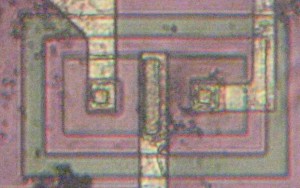
Copy Chip PIC16F870 Program and data out from microcontroller PIC16F870 flash memory and eeprom memory, reset the status of MCU PIC16F870 from locked to unlocked one after disable its security fuse bit by MCU crack technique
Copy Chip PIC16F870 Program and data out from microcontroller PIC16F870 flash memory and eeprom memory, reset the status of MCU PIC16F870 from locked to unlocked one after disable its security fuse bit by MCU crack technique;
Microcontroller Core Features:
· High performance RISC CPU
· Only 35 single word instructions to learn
· All single cycle instructions except for program branches which are two-cycle
· Operating speed: DC – 20 MHz clock input DC – 200 ns instruction cycle
· 2K x 14 words of FLASH Program Memory
128 x 8 bytes of Data Memory (RAM) 64 x 8 bytes of EEPROM Data Memory
· Pinout compatible to the PIC16CXXX 28 and 40-pin devices
· Interrupt capability (up to 11 sources)
· Eight level deep hardware stack
· Direct, Indirect and Relative Addressing modes;
· Power-on Reset (POR)
· Power-up Timer (PWRT) and
Oscillator Start-up Timer (OST)
· Watchdog Timer (WDT) with its own on-chip RC oscillator for reliable operation when MCU STM32F107RCT6 code recovery
· Programmable code protection
· Power saving SLEEP mode
· Selectable oscillator options
· Low power, high speed CMOS FLASH/EEPROM technology
· Fully static design
· In-Circuit Serial Programmingä (ICSPä) via two pins
· Single 5V In-Circuit Serial Programming capability
· In-Circuit Debugging via two pins
· Processor read/write access to program memory
· Wide operating voltage range: 2.0V to 5.5V
· High Sink/Source Current: 25 mA
· Commercial and Industrial temperature ranges
· Low power consumption:
– < 1.6 mA typical @ 5V, 4 MHz
– 20 mA typical @ 3V, 32 kHz
– < 1 mA typical standby current
Peripheral Features:
· Timer0: 8-bit timer/counter with 8-bit prescaler
· Timer1: 16-bit timer/counter with prescaler, can be incremented during SLEEP via external crystal/clock
· Timer2: 8-bit timer/counter with 8-bit period register, prescaler and postscaler
· One Capture, Compare, PWM module
– Capture is 16-bit, max. resolution is 12.5 ns
– Compare is 16-bit, max. resolution is 200 ns
– PWM max. resolution is 10-bit
· 10-bit multi-channel Analog-to-Digital converter only
· Universal Synchronous Asynchronous Receiver
Transmitter (USART/SCI) with 9-bit address detection
· Parallel Slave Port (PSP) 8-bits wide, with external RD, WR and CS controls (40/44-pin only)
· Brown-out detection circuitry for Brown-out Reset (BOR)
 Copy IC PIC16F84A Binary
Copy IC PIC16F84A Binary
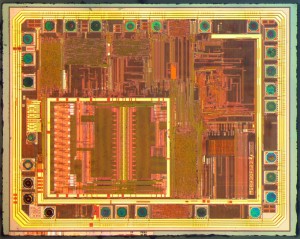
Copy IC PIC16F84A Binary out from microcontroller PIC16F84A flash memory, and reprogramme the firmware into blank MCU PIC16F84A which will provide the same functions as original version
Copy IC PIC16F84A Binary out from microcontroller PIC16F84A flash memory, and reprogramme the firmware into blank MCU PIC16F84A which will provide the same functions as original version, the status of master original MICROPROCESSOR PIC16F84A can be unlocked;
The PIC16F8X is a group in the PIC16CXX family of low-cost, high-performance, CMOS, fully-static, 8-bit microcontrollers. This group contains the following devices:
· PIC16F83
· PIC16F84
Table 1-1 lists the features of the PIC16F8X. A simplified block diagram of the PIC16F8X is shown in Figure 3-1.
The PIC16F8X fits perfectly in applications ranging from high speed automotive and appliance motor control to low-power remote sensors, electronic locks, security devices and smart cards. The Flash/EEPROM technology makes customization of application after Copy microcontroller programs (transmitter codes, motor speeds, receiver frequencies, security codes, etc.) extremely fast and All PICmicro™ microcontrollers employ an advanced RISC architecture. PIC16F8X devices have enhanced core features, eight-level deep stack, and multiple internal and external interrupt sources.
The separate instruction and data buses of the Harvard architecture allow a 14-bit wide instruction word with a separate 8-bit wide data bus. The two stage instruction pipeline allows all instructions to execute in a single cycle, except for program branches (which require two cycles). A total of 35 instructions (reduced instruction set) are available. Additionally, a large register set is used to achieve a very high performance level.
PIC16F8X microcontrollers typically achieve a 2:1 code compression and up to a 4:1 speed improvement (at 20 MHz) over other 8-bit microcontrollers in their class. The small footprint packages make this microcontroller series perfect for all applications with space limitations. Low-cost, low-power, high performance, ease-of-use and I/O flexibility of making the PIC16F8X very versatile even in areas where no microcontroller use has been considered (e.g., timer functions; serial communication; capture, compare and PWM functions; and co-processor applications).
The serial in-system programming feature (via two pins) offers flexibility of customizing the product after complete assembly and testing. This feature can be used to serialize a product, store calibration data, or program the device with the current firmware before shipping after IC program can be restored.
The PIC16F8X has up to 68 bytes of RAM, 64 bytes of Data EEPROM memory, and 13 I/O pins. A timer/ Family and Upward Compatibility counter is also available.
The PIC16CXX family has special features to reduce external components, thus reducing cost, enhancing system reliability and reducing power consumption.
There are four oscillator options, of which the single pin RC oscillator provides a low-cost solution, the LP Those users familiar with the PIC16C5X family of microcontrollers will realize that this is an enhanced version of the PIC16C5X architecture. Please refer to Appendix A for a detailed list of enhancements. Code written for PIC16C5X devices can be easily ported to PIC16F8X devices (Appendix B). oscillator minimizes power consumption, XT is a standard crystal, and the HS is for High Speed crystals.
Development Support
The SLEEP (power-down) mode offers power saving.
The user can wake the chip from sleep through several external and internal interrupts and resets.
A highly reliable Watchdog Timer with its own on-chip RC oscillator provides protection against software lock-up.
The devices with Flash program memory allow the same device package to be used for prototyping and production. In-circuit reprogrammability allows the code to be updated without the device being removed from the end application.
This is useful in the development of many applications where the device may not be easily accessible, but the prototypes may require code updates. This is also useful for remote applications where the code may need to be updated (such as rate information)
The PIC16CXX family is supported by a full-featured macro assembler, a software simulator, an in-circuit emulator, a low-cost development programmer and a full-featured programmer. A “C” compiler and fuzzy logic support tools are also available.
 Copy Chip AT89S8252 Flash
Copy Chip AT89S8252 Flash
Copy Chip AT89S8252 Flash content has to decapsulate the silicon package of AT89S8252 which act as the 1st layer of tamper resistent protection, unlock Microcontroller AT89S8252 also needs to modify its security fuse bit;
Features
· Compatible with MCS®51 Products
· 8K Bytes of In-System Reprogrammable Downloadable Flash Memory
– SPI Serial Interface for Program Downloading
– Endurance: 1,000 Write/Erase Cycles
2K Bytes EEPROM
– Endurance: 100,000 Write/Erase Cycles
4V to 6V Operating Range
Fully Static Operation: 0 Hz to 24 MHz
Three-level Program Memory Lock
256 x 8-bit Internal RAM
32 Programmable I/O Lines
Three 16-bit Timer/Counters
Nine Interrupt Sources
Programmable UART Serial Channel
SPI Serial Interface
Low-power Idle and Power-down Modes
Interrupt Recovery from Power-down
Programmable Watchdog Timer
Dual Data Pointer
Power-off Flag
Description
The AT89S8252 is a low-power, high-performance CMOS 8-bit microcontroller with 8K bytes of downloadable Flash programmable and erasable read-only memory and 2K bytes of EEPROM. The device is manufactured using Atmel’s high-density nonvolatile memory technology and is compatible with the industry-standard 80C51 instruction set and pinout.
The on-chip downloadable Flash allows the program memory to be reprogrammed In-System through an SPI serial interface or by a conventional nonvolatile memory programmer. By combining a versatile 8-bit CPU with downloadable Flash on a monolithic chip, the Atmel AT89S8252 is a powerful microcontroller, which provides a highly-flexible and cost-effective solution to many embedded control applications.
The AT89S8252 provides the following standard features: 8K bytes of downloadable Flash, 2K bytes of EEPROM, 256 bytes of RAM, 32 I/O lines, programmable watchdog timer, two data pointers, three 16-bit timer/counters, a six-vector two-level interrupt architecture, a full duplex serial port, on-chip oscillator, and clock circuitry.
In addition, the Copy Chip AT89S8252 is designed with static logic for operation down to zero frequency and supports two software selectable power saving modes. The Idle Mode stops the CPU while allowing the RAM, timer/counters, serial port, and interrupt system to continue functioning. The Power-down mode saves the RAM contents but freezes the oscillator, disabling all other chip functions until the next external interrupt or hardware reset.
The downloadable Flash can be changed a single byte at a time and is accessible through the SPI serial interface. Holding RESET active forces the SPI bus into a serial programming interface and allows the program memory to be written to or read from unless lock bits have been activated.
 Copy Microcontroller PIC16F684 Firmware
Copy Microcontroller PIC16F684 Firmware
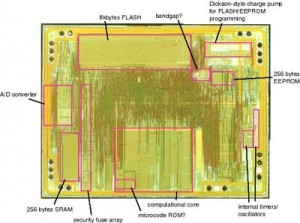
Copy Microcontroller PIC16F684 Firmware needs to unlock Microprocessor PIC16F684 security fuse bit, the silicon package can be removed by proper chemical solution, by focus ion beam will effectively modify the circuitry pattern of MCU PIC16F684
Copy Microcontroller PIC16F684 Firmware needs to unlock Microprocessor PIC16F684 security fuse bit, the silicon package can be removed by proper chemical solution, by focus ion beam will effectively modify the circuitry pattern of MCU PIC16F684;
High-Performance RISC CPU:
· Only 35 instructions to learn:
– All single-cycle instructions except branches
· Operating speed:
– DC – 20 MHz oscillator/clock input
– DC – 200 ns instruction cycle
· Interrupt capability
· 8-level deep hardware stack
Low-Power Features:
· Standby Current:
– 1 nA @ 2.0V, typical
· Operating Current:
– 8.5 µA @ 32 kHz, 2.0V, typical
– 100 µA @ 1 MHz, 2.0V, typical
· Watchdog Timer Current:
– 1 µA @ 2.0V, typical
· Direct, Indirect and Relative Addressing modes
Peripheral Features:
Special Microcontroller Features:
· Precision Internal Oscillator:
– Factory calibrated to ±1%
– Software selectable frequency range of 8 MHz to 31 kHz
– Software tunable
– Two-speed Start-up mode
– Crystal fail detect for critical applications
– Clock mode switching during operation for power savings
· Power-saving Sleep mode
· Wide operating voltage range (2.0V-5.5V)
· Industrial and Extended Temperature range
· Power-on Reset (POR)
· Power-up Timer (PWRT) and Oscillator Start-up Timer (OST)
· Brown-out Detect (BOD) with software control option
· Enhanced low-current Watchdog Timer (WDT) with on-chip oscillator (software selectable nominal 268 seconds with full prescaler) with software enable;
· Multiplexed Master Clear with pull-up/input pin
· Programmable code protection
· High Endurance Flash/EEPROM cell:
– 100,000 write Flash endurance
– 1,000,000 write EEPROM endurance
– Flash/Data EEPROM retention: > 40 years
· 12 I/O pins with individual direction control:
– High current source/sink for direct LED drive
– Interrupt-on-pin change
– Individually programmable weak pull-ups
– Ultra Low-power Wake-up (ULPWU)
· Analog comparator module with:
– Two analog comparators
– Programmable on-chip voltage reference (CVREF) module (% of VDD)
– Comparator inputs and outputs externally accessible
· A/D Converter:
– 10-bit resolution and 8 channels
· Timer0: 8-bit timer/counter with 8-bit programmable prescaler· Enhanced Timer1:
– 16-bit timer/counter with prescaler
– External Gate Input mode
– Option to use OSC1 and OSC2 in LP mode as Timer1 oscillator if INTOSC mode selected
· Timer2: 8-bit timer/counter with 8-bit period register, prescaler and postscaler
· Enhanced Capture, Compare, PWM module:
– 16-bit Capture, max resolution 12.5 ns
– Compare, max resolution 200 ns
– 10-bit PWM with 1, 2 or 4 output channels, programmable “dead time”, max frequency 20 kHz
· In-Circuit Serial ProgrammingTM (ICSPTM) via two pins.
